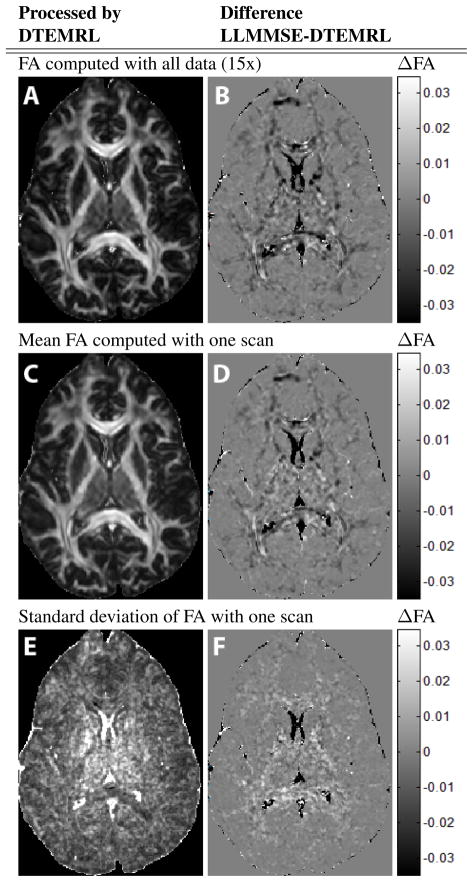Diffusion Tensor Estimation by Maximizing Rician Likelihood
B. A. Landman, P-L. Bazin, and J. L. Prince. “Diffusion Tensor Estimation by Maximizing Rician Likelihood”, In Proceedings of the 2007 International Conference on Computer Vision Workshop on Mathematical Methods in Biomedical Image Analysis, Rio de Janeiro, Brazil, October 2007. (Oral Presentation)
Full text: https://www.ncbi.nlm.nih.gov/pmc/articles/PMC3488430/
Abstract
Diffusion tensor imaging (DTI) is widely used to characterize white matter in health and disease. Previous approaches to the estimation of diffusion tensors have either been statistically suboptimal or have used Gaussian approximations of the underlying noise structure, which is Rician in reality. This can cause quantities derived from these tensors — e.g., fractional anisotropy and apparent diffusion coefficient — to diverge from their true values, potentially leading to artifactual changes that confound clinically significant ones. This paper presents a novel maximum likelihood approach to tensor estimation, denoted Diffusion Tensor Estimation by Maximizing Rician Likelihood (DTEMRL). In contrast to previous approaches, DTEMRL considers the joint distribution of all observed data in the context of an augmented tensor model to account for variable levels of Rician noise. To improve numeric stability and prevent non-physical solutions, DTEMRL incorporates a robust characterization of positive definite tensors and a new estimator of underlying noise variance. In simulated and clinical data, mean squared error metrics show consistent and significant improvements from low clinical SNR to high SNR. DTEMRL may be readily supplemented with spatial regularization or a priori tensor distributions for Bayesian tensor estimation.
